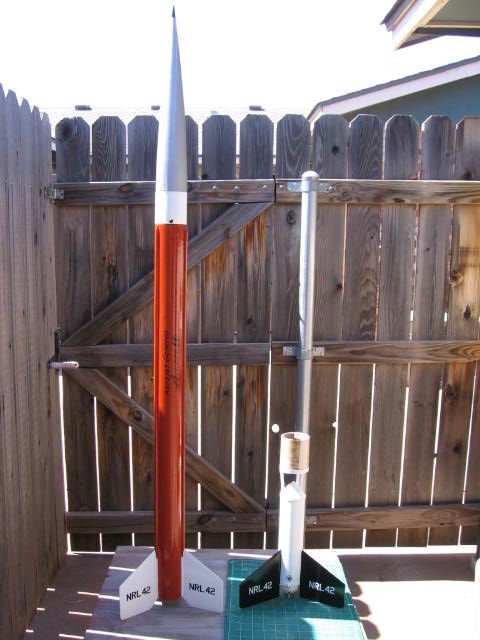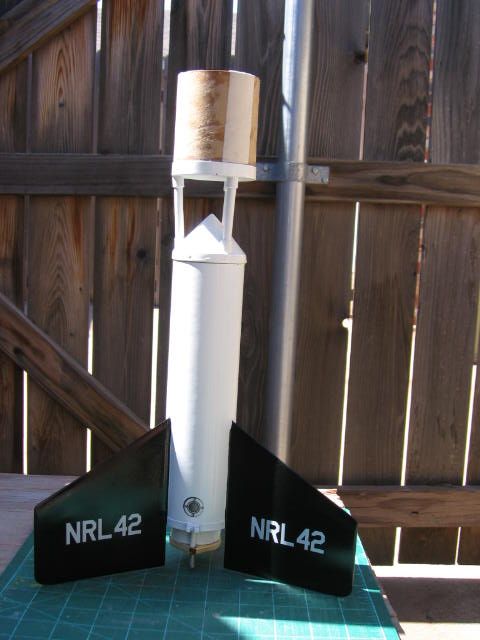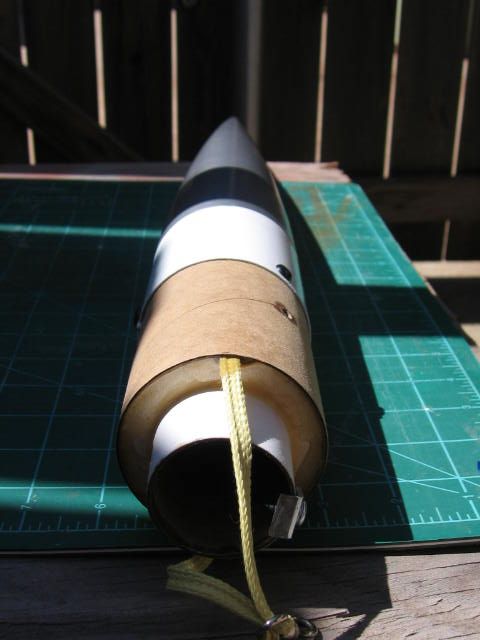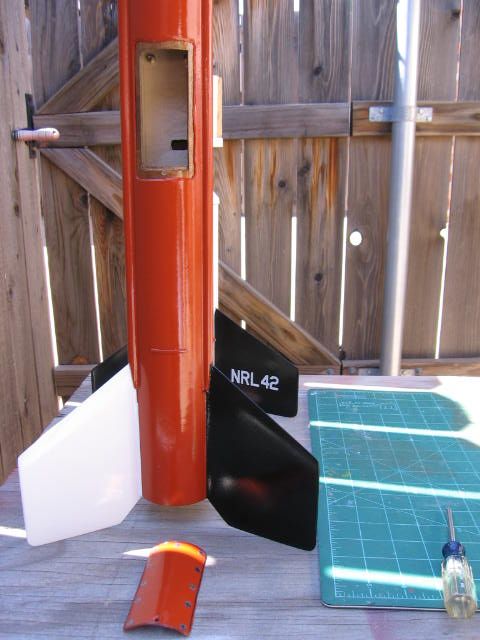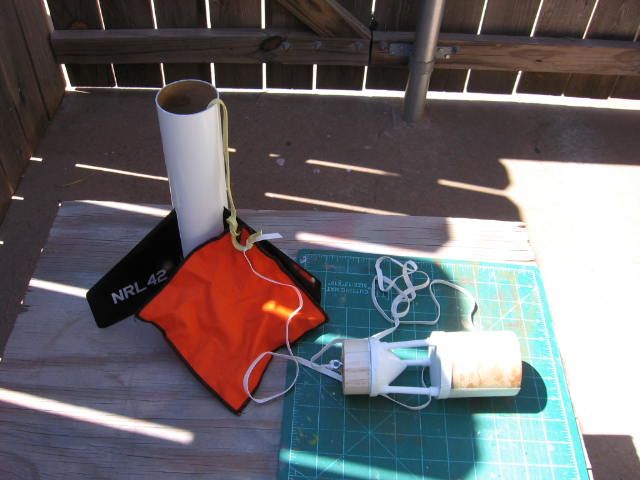Assembly wise the rocket is completed and could be launched tomorrow; though I’d really prefer to get at least a coat of primer on before exposing it to the elements.
A friend had a set of RockSim files on his computer and it is apparent that the CGs are going to be way, way ahead of the listed CPs. And yes I am using the pleural as there are two each, one in its two stage configuration and one as a single stage.
Funny thing; the CP as a two stage rocket is located below the upper stage’s airframe and is a point in open air.
The over stable, (multiple caliber?) aspect of this rocket coupled with its ginourmous fins, you got to see them to believe them, leads me to believe the rocket will be prone to weather cocking badly.
Has anybody ever had to add weight to the BACK of a rocket to insure better flight characteristics?
Above all else I’ll be attending a P.A.R.C. meeting/launch this coming weekend, weather permitting and the river doesn’t rise, which should give me the chance to get some pictures taken and perhaps posted.

